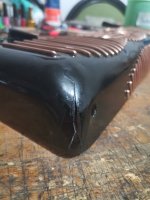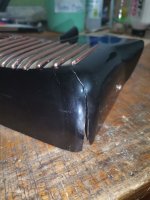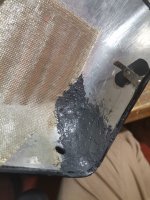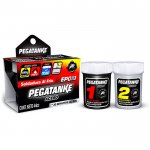Sebastian Bravo
Active member
Hi forum! long time not posting something. I hope everyone is ok. I've been doing my jobs with accordions as usual (Tuning, mechanic repairs, air leaks and things like that) but i've never had to repair celluloid... until now.
I recieved a Hohner Gola, that fell and broke. It has signs of been broken in the past in the same part (grill corners) and had an epoxy and celluloid repair job (which can be noticed because the new celluloid is darker than the original black, the corners looks darker, but only when pointed with a bright light)
It also broke in the top corner of the box, and had glue marks. Now every repaired part has broken again. Even some black keys had to be glued again.
I repaired the wooden corner with epoxy, now the air leaks are ok, then i made the same with the grill corners (Gotta paint that epoxy with black paint)
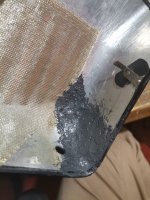
But it's time to work with the celluloid, to make it looks like nothing happened. Most of the celluloid in the corners of the grill is trying to separate from the aluminum, 2mm gap. There's also missing parts that broke.
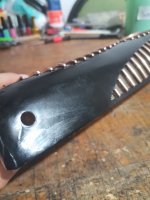
It also has a 1/4 jack hole in the front of the grill and i would like to seal that too.
I have a broken Weltmeister with black celluloid. I want to try and test my technique with that one first, and then try it with the Gola.
Any tips?
I recieved a Hohner Gola, that fell and broke. It has signs of been broken in the past in the same part (grill corners) and had an epoxy and celluloid repair job (which can be noticed because the new celluloid is darker than the original black, the corners looks darker, but only when pointed with a bright light)
It also broke in the top corner of the box, and had glue marks. Now every repaired part has broken again. Even some black keys had to be glued again.
I repaired the wooden corner with epoxy, now the air leaks are ok, then i made the same with the grill corners (Gotta paint that epoxy with black paint)

But it's time to work with the celluloid, to make it looks like nothing happened. Most of the celluloid in the corners of the grill is trying to separate from the aluminum, 2mm gap. There's also missing parts that broke.

It also has a 1/4 jack hole in the front of the grill and i would like to seal that too.
I have a broken Weltmeister with black celluloid. I want to try and test my technique with that one first, and then try it with the Gola.
Any tips?

